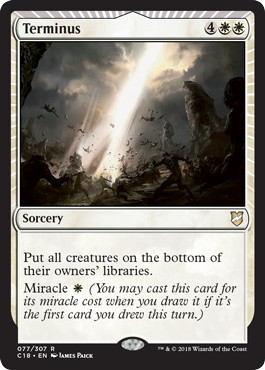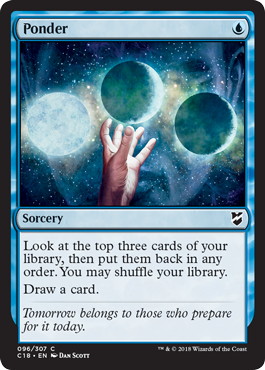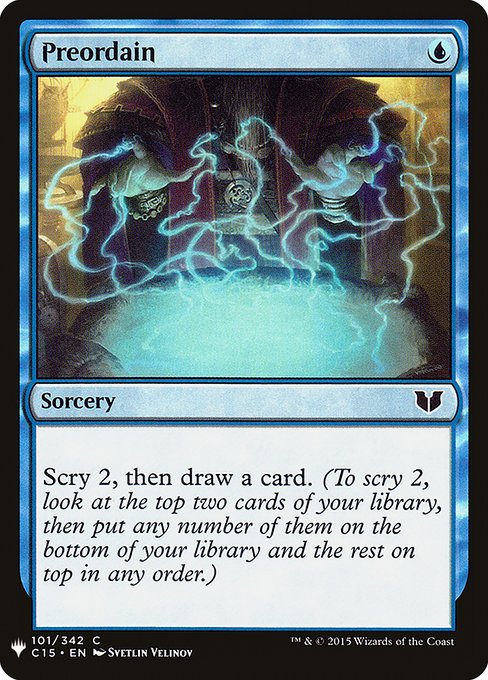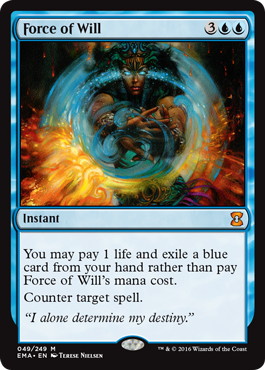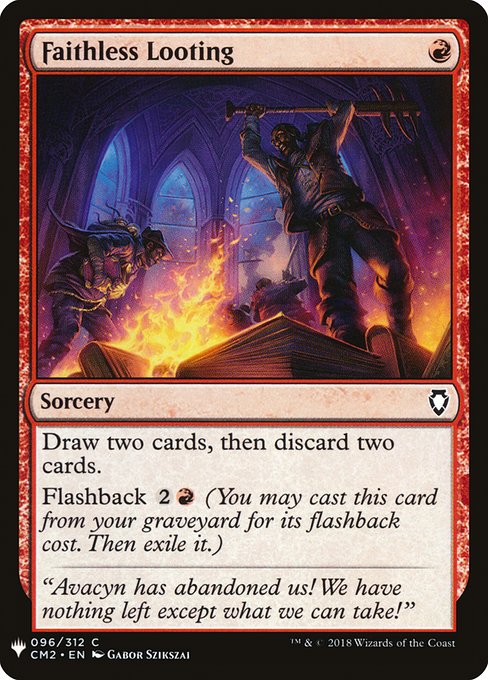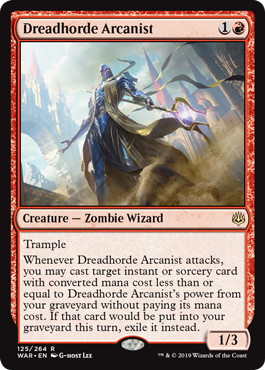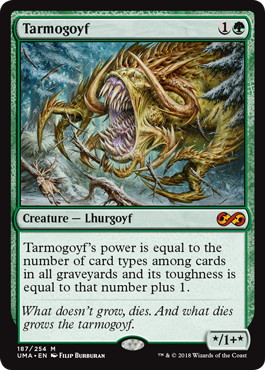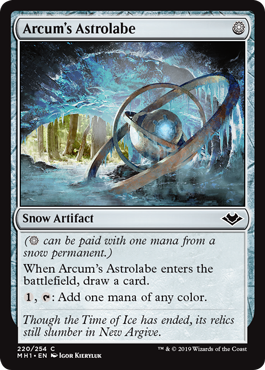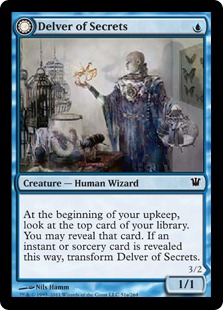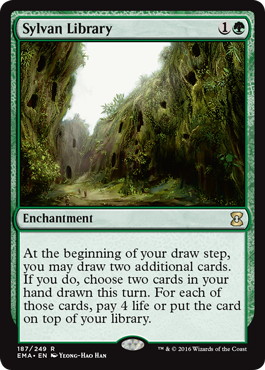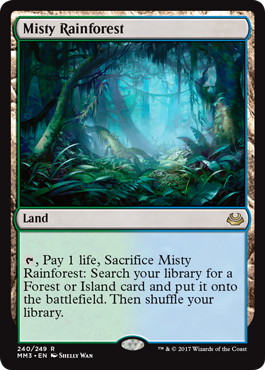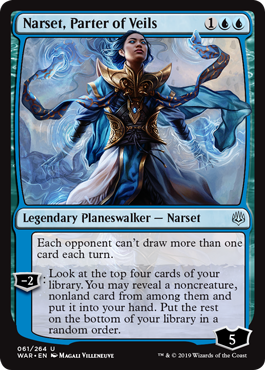Introduction
Hola!
Casting cantrips is something that has been written about many times during Magic history. However, things are changing in our favorite game.
Today I want to write about how to use our cantrips and some differences we should be considering if we are playing them. While I’m going to focus my article on the most played Legacy cantrips, it can be really useful for any format that uses cantrips.
Types of Cantrips
《Brainstorm》
《Brainstorm》 is arguably one of the best cards in the whole Legacy format, if not the best. It is also one of the hardest card to play with in the whole game, if not the hardest. The combination of 《Brainstorm》 plus a shuffling effect is a way to generate virtual card advantage since it lets you transform relatively useless cards into fresh ones. However, playing 《Brainstorm》 this way isn’t exactly obvious nor is always the best way to play this powerful instant.
On a basic level, 《Brainstorm》 is better when casting in a game where you can put two useless cards (usually lands) back into your library, generating card advantage. 《Brainstorm》 is also very strong when our hand is not good enough to develop a competitive game and 《Brainstorm》 draws our way out of there.
The easier example is a hand with only one land where we can avoid being manascrewed by drawing 3 extra cards. Other cantrips can search lands for you but they can’t turn bad cards into good ones. That is why, when having multiple cantrips, we simply save the 《Brainstorm》 for the later stages of the game.
《Brainstorm》 is also very valuable if your deck has cards that you actively want to get rid of, like combo pieces or cards like 《Terminus》. In decks where 《Brainstorm》 is a synergy card in addition to being a cantrip, we should try to hold them as much as we can.
《Ponder》/《Preordain》
《Ponder》 is the cantrip that can dig the most if we are searching for something specific since after shuffling we get to see up to 4 cards. For this reason, it is often the first cantrip we play when we are land light. 《Ponder》 can also be used as a shuffle effect in combination with 《Brainstorm》. In my opinion, the hardest decision with 《Ponder》 is usually the one where we decide to cast it or to pitch it to 《Force of Will》.
How you play 《Brainstorm》, 《Ponder》 and 《Preordain》 is often influenced by the fact that 《Force of Will》 is likely in one or both sides of the table, particularly game 1. 《Force of Will》 can be an answer to a critical threat or a dead card, and evaluating which one is happening in each game will help us decided what to do with our cantrips.
Non-Blue Synergy Cantrips
While most cantrips that are played in Legacy are blue, cards like 《Mishra’s Bauble》 are often seen in many Modern decks. The basic idea here is to keep in mind how you can get the most value of your spell.
With 《Faithless Looting》, it is often discarding two graveyard-based cards, and with 《Mishra’s Bauble》 it is when you get a “Scry” combining it with a fetchland. If you already have a reasonable use for your mana, it is often correct to hold those cantrip effects for a turn or two.
What Has Changed?
There are some Legacy situations where drawing certain cards can dramatically change the course of the game. If we are playing a combo deck missing something to go for the win in a turn where our opponent doesn’t many shields up yet – likely our turn 1 on the play against a deck like Delver – it is often worth to just play the 《Brainstorm》 and see if we have the option of going for it. Identifying those situations mid-game can be tricky, though.
Overall, the power level of threats has increased considerably after the last Magic sets, and with that, “Power Level/Card Advantage” dynamics have changed. Cards like 《Oko, Thief of Crowns》 just define the games where they stay on the battlefield, and we should take that in account while playing.
Being the first one to deploy a threat when threats are very hard to answer is also more important than ever, and the fact that the threats are so powerful means they are often more relevant than card advantage itself.
Cantrips, in essence means that we are spending mana to improve our hand without affecting the board. That means we are losing tempo; we won’t advance on the battlefield by playing them. This is also why having a bunch of cantrips doesn’t make a hand necessarily good.
Since the power level of most threats is now higher than before, it is more often to find a situation where we simply want to be casting a threat as soon as possible, meaning that the scenarios where holding cantrips are correct are less likely.
An easy way to see how this impacts how we play our cantrips is to compare 《Dreadhorde Arcanist》 with 《Tarmogoyf》. 《Tarmogoyf》 advances our game in a way because it reduces our opponent’s life total, but 《Arcanist》 advances our game in a way where we simply get more advantage, which is generally harder to revert. 《Arcanist》 works in a similar way as 《Sylvan Library》 against decks that can’t attack your life total, where untapping with it can make extremely hard for our opponent to win the game.
A card like 《Oko》 can have a similar effect against fair decks, making all their Planeswalkers/creatures relatively irrelevant if 《Oko》 is the first threat to touch the battlefield.
This also means, of course, that countering 《Oko》 is very important. 《Force of Will》 is slowly becoming better and better in fair blue matchups because of this. What once used to be a bad card for fair matchups and a relatively easy sideboard out, is simply another way to answer certain hards to otherwise would be tricky to answer.
The less likely it is for a player to come back from an unfavorable position, the less inclined you should be to hold your cantrips.
Even if we are playing a fair matchup, if we have a slow hand that is very weak to something like 《Oko》, digging for a 《Force of Will》 or our own 《Oko》 might be better than using our mana better or to have the option to dig for more cards later in the game. This is something we should take into account when deciding between cards like 《Ponder》 or 《Arcum’s Astrolabe》.
If we are playing a mirror of Snow Control and we are facing a decision where we have to decide between 《Arcum’s Astrolabe》 and 《Ponder》 without having a 《Force of Will》 in a turn where our opponent might just land an 《Oko》, consider going for the 《Ponder》.
Traditional cantrip wisdom has taught us that waiting for more will let us make a better decision with our cantrips, but I think the trick here is to identify than in a spot like that, we already know what we need, so we should not wait for more. This is particularly important in-game 1s, where having access to answers to certain permanents is relatively uncommon.
Playing Cantrips vs. Playing Threats
Deciding when to cast 《Delver of Secrets》 or when to save it to pitch a 《Force of Will》 has always been a tricky part of playing Delver decks, but there are even more subtle things playing 《Delver of Secrets》. Sometimes it is just better to play a 《Ponder》.
To key to evaluate when to deviate from there is trying to decide which axis are you going to push to win the game. This is very common against combo decks, but not that much against the rest. The reason for this is the fact that what pressures their life total – creatures- also pressures their Planeswalkers or can be traded by their own creatures.
Against combo or non-interactive decks, it works differently, though. If your opponent eventually plays a spell that ends the game in the spot, it doesn’t really matter much if their life total is 1 or 20, the game just ends.
For this reason, once you decided you have enough pressure, more creatures won’t add that much value to your game. This is also the case when you decide that you don’t need much pressure at all since you are winning on the card advantage axis.
《Sylvan Library》 and 《Dreadhorde Arcanist》 are the most common ways of doing so, but it can also be applied to bigger threats like 《Oko, Thief of Crowns》 and 《Jace, the Mind Sculptor》.
Playing against Storm with Snow Control, consider a hand like this for our turn three after our opponent has fired some discard spells:
In this situation, we should cast 《Ponder》 trying to find a 《Force of Will》 or 《Force of Negation》 to defend ourselves while we just try to win the game with 《Jace》. Untapping with 《Jace》 will likely end the game in a turn or two since we should be able to get enough card advantage to outpower our opponent’s topdeck.
However, if we lose that resource war, having an 《Oko》 on the battlefield won’t matter at all. If we win that resource war, we were winning anyway. Here, our best use for 《Oko》 is to be pitched to a potential 《Force of Will》 and I think going with the 《Oko》 pressure is a mistake.
Playing Cantrips vs. Holding Cantrips
Overall, tempo matters more now than it has ever mattered in fair vs fair legacy battles. For this reason, I think the Miracles mirrors where it was correct to hold cantrips forever until we could get the maximum value of every cantrip are long gone.
Cards like 《Ice-Fang Coatl》 make it so we often play relatively long games while we still use all our mana every turn. For this reason, I think nowadays I would advocate against holding 《Brainstorm》s in situations where having access to more cards could lead into games where we out-curve our opponent.
It is easy to see when holding a 《Brainstorm》 becomes an advantage later in the game when we get to put back two lands, but it is trickier to identify where casting that 《Brainstorm》 would have led into a game where we would untap on our turn 4 with an 《Oko, Thief of Crowns》 on the battlefield.
The big conclusion for me is that, because of the power level Legacy spells have on 2020, when in doubt, fire that 《Brainstorm》.
There are of course many situations where holding is better, such as a hand that has too many copies of the same effect, but I think the logic behind playing the cantrips faster than before will apply more often than not.
There’s even 《Narset, Parter of Veils》 that is sneaking in some sideboards!
Overall, a notable exception to playing our cantrips “Soon” is playing the Delver Tempo mirror, even though the reason is fundamentally the same. If we expect our opponent to play an extremely powerful threat like 《Oko, Thief of Crowns》 (huh), we can decide not to play our 《Ponder》 to play around 《Daze》 effects if we already have a countermagic effect. A resolved 《Oko》 in game 1 of a tempo mirror is likely a game-winning play, so delaying our cantrips to make it less likely is a common play in those matchups.
Conclusion
If you look for them carefully, you will find many different scenarios where both holding and casting your cantrips could be correct. Magic is an extremely deep game, and that makes it really fun!
Thanks,




